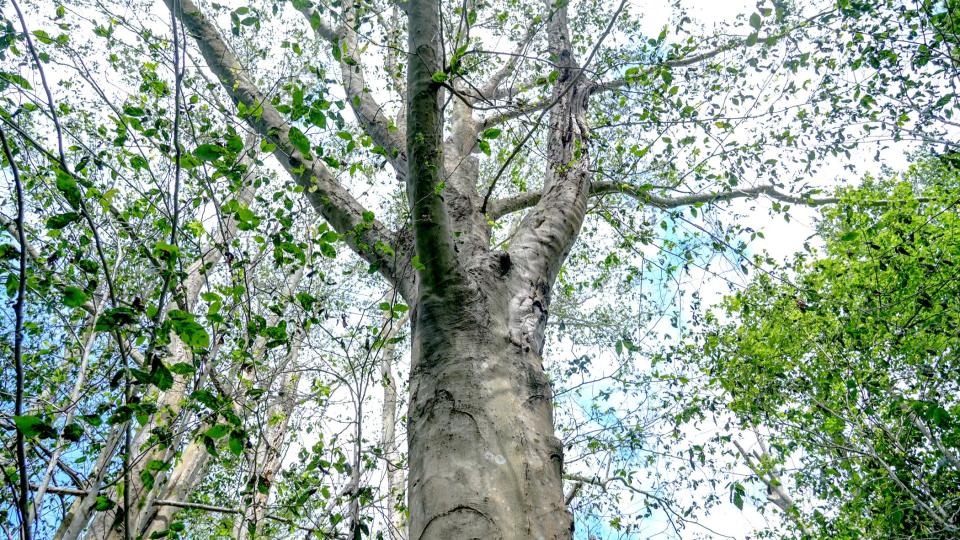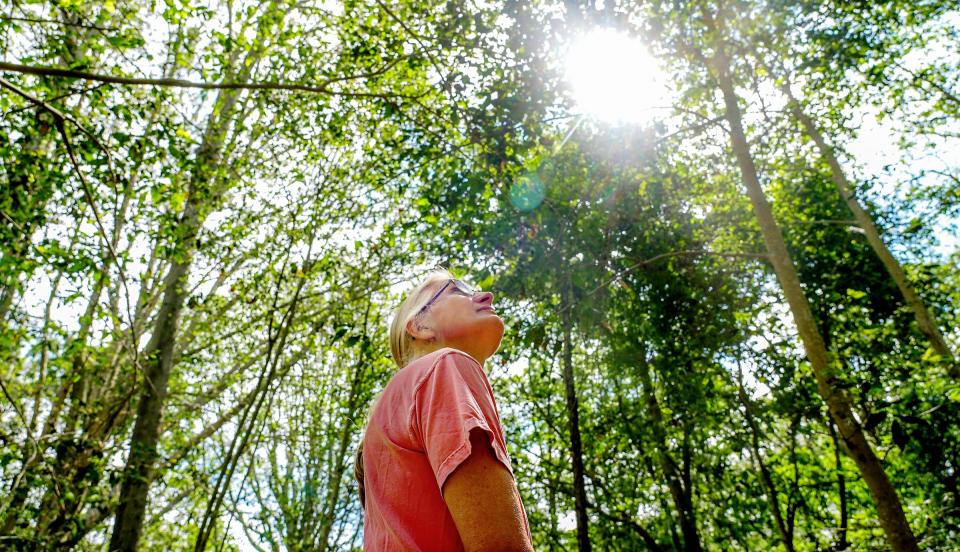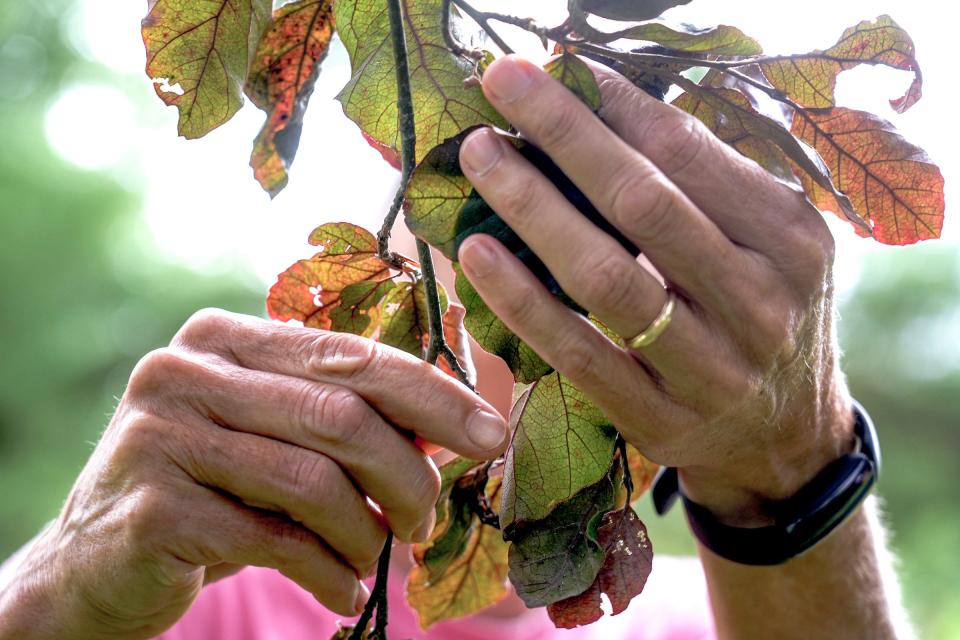What to know about beech leaf disease, the 'heartbreaking' threat to forests along the East Coast
A mysterious parasitic worm that infests trees has experts concerned about forests along the East Coast.
Beech leaf disease was the first detected in Ohio in 2012. How it got to the state is unclear, as is how it rapidly spread as far north as Maine, as far south as Virginia and to parts of all the states in between. It has also been found in Canada.
Large numbers of foliar nematodes are the culprit behind the disease, which interferes with chlorophyll production and starves beech trees to death, according to the Providence Journal’s Alex Kuffner, part of the USA Today Network. The parasite, which is invisible to the naked eye, has also become more widespread in European cultivars often used for landscaping, including weeping beech, copper beech, fern-leaved beech and others.
Considered a “foundational species" in northern hardwood forests and especially critical for black bears, American beech's tall canopy and smooth gray trunk provides long-term habitat and sustenance for numerous types of birds, insects and mammals. The tree — which may live up to 400 years — produces a high-fat nut for bears and other animals to eat, a place for woodpeckers to forage, and homes for animals to nest and raise their young.
“It’s heartbreaking,” University of Rhode Island plant scientist Heather Faubert told Kuffner.


Mihail Kantor, an assistant research professor of nematology at Pennsylvania State University, told Rich Schapiro of NBC News the disease could have “a huge ecological impact.”
What does infestation look like?
When diseased leaves are cut open and wet with a drop of water, thousands of nematodes are known to swim out, according to the Providence Journal.
The worms overwinter in the long, cigar-shaped beech buds and attack leaves as they develop in the spring — which interrupts the tree leaves’ ability to photosynthesize and produce food.
In the first year of infestation, the leaves will appear to have bands. By the second year, the leaves may be crinkled, thick and deformed, or they may not change in appearance at all.
A previously healthy infested tree will often tap into its energy stores to generate a second round of smaller, thinner leaves, but it can only do this a few years in a row before it becomes depleted.

Is there a cure for beech leaf disease?
There is no known way to control or manage this disease right now, according to the New York Department of Environmental Conservation, but research efforts are underway to fight it, Eric Williams of Cape Cod Times, part of the USA Today Network, reported earlier this summer.
Peter Hanlon, an integrated pest management specialist and arborist representative for Bartlett Tree Experts, a private company with a research arm and laboratory based in Charlotte, North Carolina, said Bartlett's scientists had seen promising results in trials with a nematode-attacking fungicide product.
According to NBC News, a small group of researchers have struggled to get funding from government agencies and other sources for needed studies that could help tackle the issue. The spotted lantern fly, on the other hand, has received more research money and international media attention, experts that spoke with NBC said.
“Nothing against the spotted lantern fly … but it doesn’t actually bother people, and it doesn't bother many plants,” Margery Daughtrey, a plant pathologist and senior extension associate at Cornell University’s School of Integrative Plant Science, told NBC. “This is threatening to eliminate an important Northeastern tree species,” she said.
Contributing: Eric Williams, Alex Kuffner
This article originally appeared on USA TODAY: Beech leaf disease threatens the decimation of forests. What to know.

